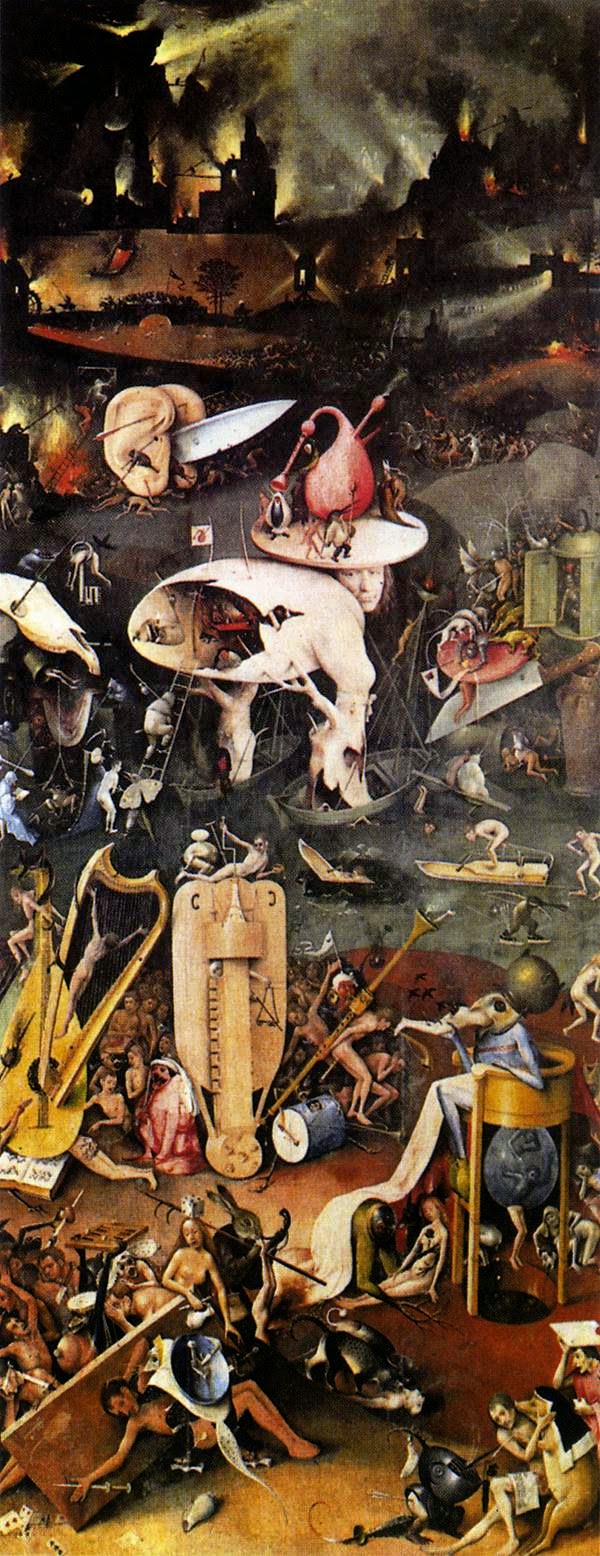None of this could
have been foreseen by Bosch: the haunting refrain of the
600 year old butt song from Hell
Is it difficult to conceive that the group of damned souls
in the right wing of Bosch’s Triptych which represents the Musicians' Level would
sing a hymn from the musical score fixed to the reverse of the reclining figure
in front of the ensemble, led by an infernal monster? It could more likely be a parody.
Dutch master Hieronymus Bosch’s paintings are packed full of vivid imagery and complex meanings.
By
far the best known and most ambitious work, The Garden of Earthly Delights
illustrates Bosch’s individual artistic style, containing the most vivid
imagery and complexity of symbolic meaning.
Bosch painted his three part masterpiece
between 1490 and 1510 when he was around 50 years old.
The open triptych shows three scenes. The left
panel is dedicated to Paradise, with the creation of Eve and the fountain of
life, while the right panel shows hell. The central panel gives its name to the
entire piece, representing a garden of life’s delights or pleasures. Between
paradise and hell, these delights are nothing more than allusions to sin,
showing humankind dedicated to diverse worldly pleasures. There are clear and
strongly erotic representations of lust, along with others, whose meanings are
more enigmatic. The fleeting beauty of flowers and the sweetness of fruit
transmit a message of fragility and the ephemeral character of happiness and
enjoyment. This seems to be corroborated by certain groups, such as the couple
enclosed in a crystal ball on the left, which probably alludes to the popular
Flemish saying: “happiness is like glass, it soon breaks”.
 |
| BOSCH, Hieronymus Triptych of Garden of Earthly Delights |
The
triptych is generally thought to be a warning of the dangers of giving in to
temptation, but has been subject to vast amounts of conjecture and scrutiny,
and critics and historians are split in two directions. Whereas some believe
that the middle panel, which depicts a fantastical world of nudes in sexual
engagement, large fruits, and other suggestive elements, is simply an
illustration of paradise lost, others believe that it is a moral warning, which
will lead you to hell, as it is depicted in the third panel of the series. Although
there are many contradictory explanations, it is generally thought to be a
warning against lust, one of the seven deadly sins.
 |
| Right Panel. Sheet music in question located in top left corner: 1480-1505. Museo del Prado, Madrid, Spain. |


